Carbon capture and storage (CCS) is often pointed to as a climate solution by Big Oil and Gas. Here are the main reasons why it isn’t a climate solution.

What is carbon capture and storage?
Carbon capture and storage, or CCS, involves capturing CO2 from sources such as power generation and industrial facilities that use fossil fuels. The captured CO2 is compressed and transported, used to extract more oil or injected into deep geological formations.
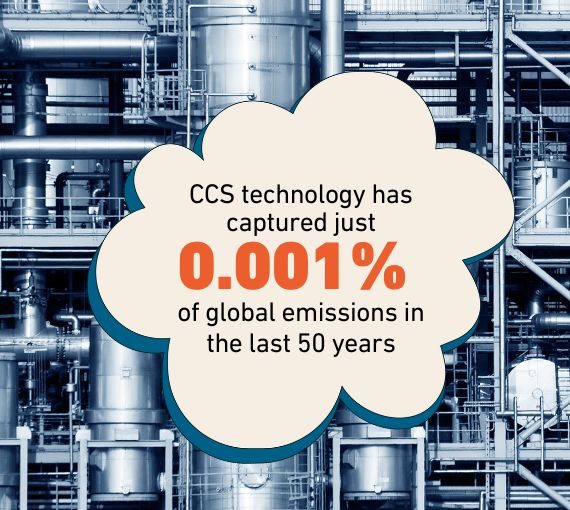
Addresses just 15 per cent of oil and gas emissions
Five decades after the first carbon capture project, the technology has captured just 0.001 per cent of global emissions. Using the technology does not have any impact on the approximately 80 per cent of oil and gas emissions from downstream use when fossil fuels are burned in places like cars and furnaces.
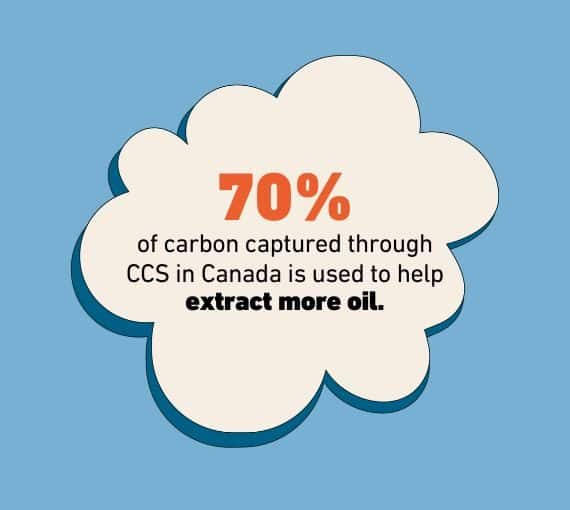
Used to extract more oil and increase production
CCS can grow the very emissions it should reduce. Most of the CO2 being captured is being used to pump more oil out of the ground that would have been out of reach. Seventy per cent of carbon captured through CCS in Canada is used to help extract more oil.
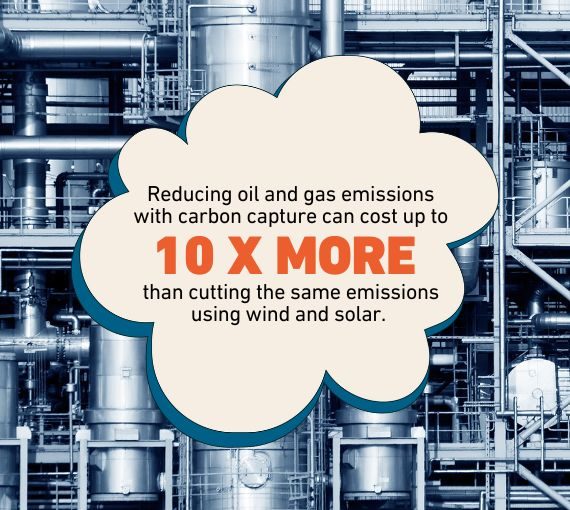
One of the most expensive ways to reduce emissions
Most CCS projects never get off the ground because the technology is too expensive. Reducing oil and gas emissions with carbon capture can cost up to 10 times more than cutting the same emissions using wind and solar. CCS has benefited from more than $9 billion in support from the federal government to date, a subsidy to the hugely profitable fossil fuel industry.

Uses a lot of energy
Building carbon capture infrastructure, capturing and compressing CO2, building more infrastructure to pipe captured carbon and developing geological storage sites require lots of energy.
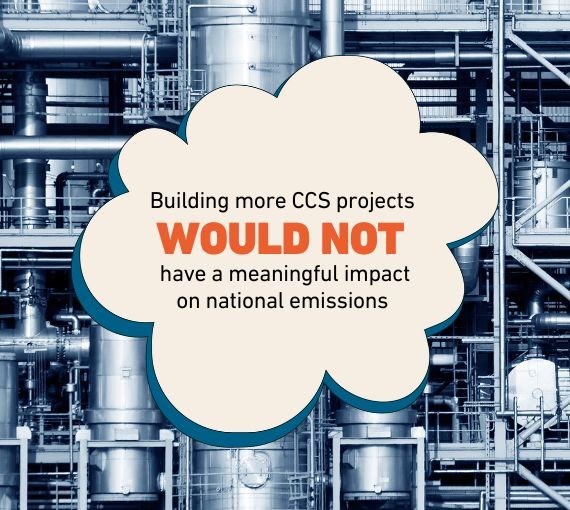
Slow to be built
There are seven CCS projects operating in Canada, capturing about 0.5 per cent of national emissions. Building more CCS projects would not have a meaningful impact on national emissions in the critical decade ahead.

Misses climate goals
CCS does not address the necessity of rapidly shifting from fossil fuel use to keep global warming below catastrophic levels within this decade.
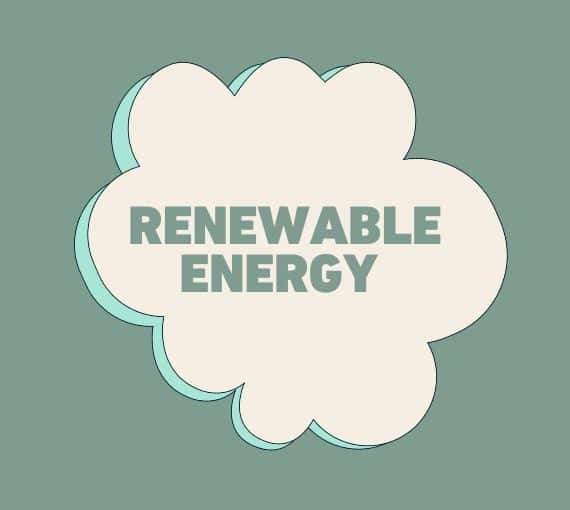
Real climate solutions are more effective and affordable
It has never been easier or more affordable to use options like renewable energy, electrifying homes and transportation and making buildings and industries more energy-efficient.



